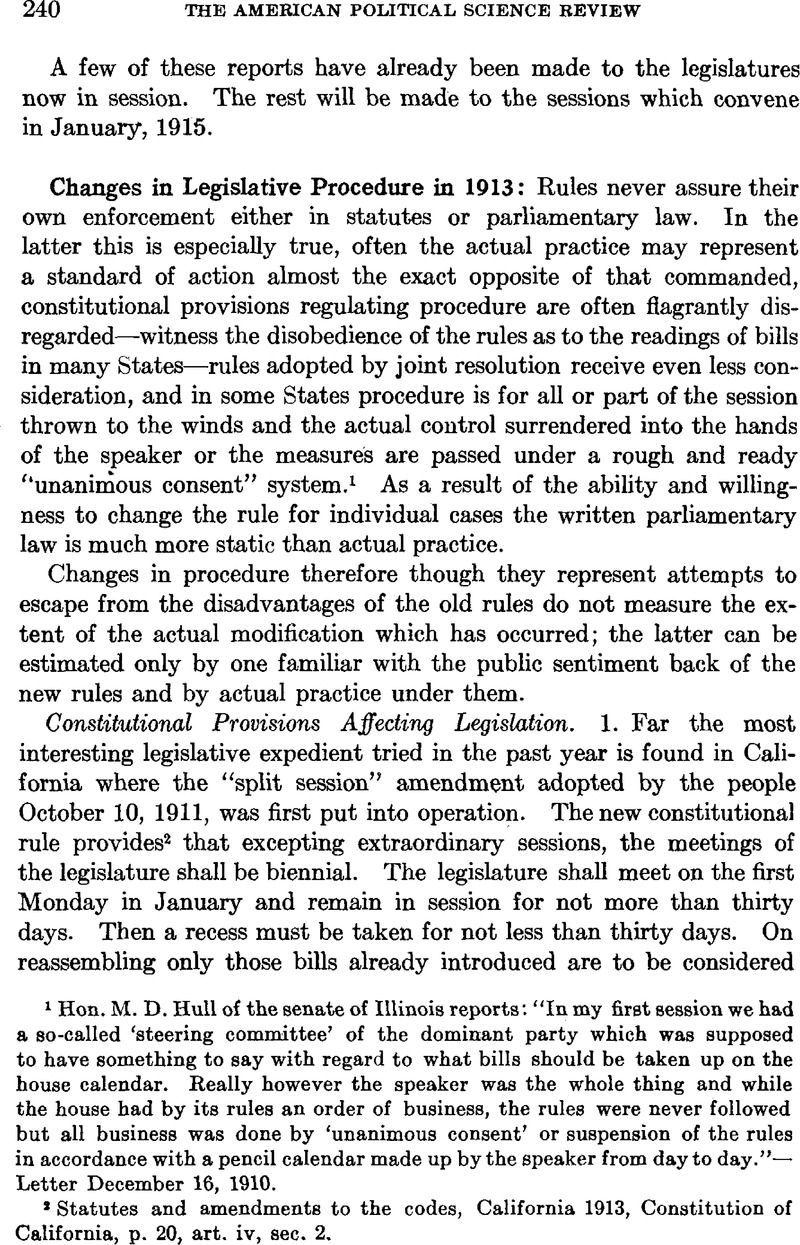No CrossRef data available.
Published online by Cambridge University Press: 02 September 2013

1 Hon. M. D. Hull of the senate of Illinois reports'. “In my first session we had a so-called ‘steering committee’ of the dominant party which was supposed to have something to say with regard to what bills should be taken up on the house calendar. Really however the speaker was the whole thing and while the house had by its rules an order of business, the rules were never followed but all business was done by ‘unanimous consent’ or suspension of the rules in accordance with a pencil calendar made up by the speaker from day to day.”— Letter December 16, 1910.
2 Statutes and amendments to the codes, California 1913, Constitution of California, p. 20, art. iv, sec. 2.
3 Favorable comment is contained in The Independent, vol. 74 (1913), p. 829, and in Scherer, A. B., Novel Law Making in California, Independent, vol. 74 (1913), p. 1088.Google Scholar
4 Hichborn, Franklin, Story of the Session of the California Legislature of 1913, p. ix.Google Scholar
5 “It was formerly the custom to limit the introduction of bills to the first fifty days of the session but since 1905 this has not been done. Under this rule a vast number of sham bills were introduced…. each member covering the subjects upon which he might by chance become interested later…. It often resulted in some wierd substituting and amending to whip a bill of this kind into shape for the uses for which it was intended.”—Letter Ex-Senator G. L. Clark, December 2, 1910.
6 Constitution of California, art. iv, sec. 11. Amendment adopted October 10, 1911.
7 General Laws of Oregon 1913, p. 7, art. ix, adopted at the election, November 5, 1912.
8 Constitution of Arizona, art. 4, pt. 2, sec. 12.
9 Letter L. F. Sweeting, Clerk of the House of Representatives of Arizona, December 13(?), 1913.
10 Laws of North Dakota, 1913, p. 320, ch. 202.
11 Revised Code of the State of North Dakota, see. 54.
12 Laws of North Dakota, 1913, p. 319, ch. 201.
13 L. F. Sweeting, Chief Clerk of the House, December, 1913.
14 Revised Laws of Nevada 1912, p. 4124.
15 General Laws of Oregon, 1913, p. 798.
16 Joint Rule, No. 33, Session 1913.
17 Joint Rule, No. 30, Session 1913.
18 Franklin Hichborn, Story of the California Legislature of 1913, p. 47.
19 See comment by Hon. M. D. Hull in American Political Science Review May, 1913, p. 239.
Comments
No Comments have been published for this article.